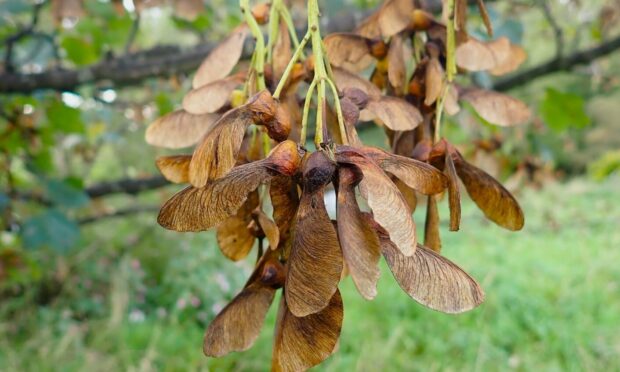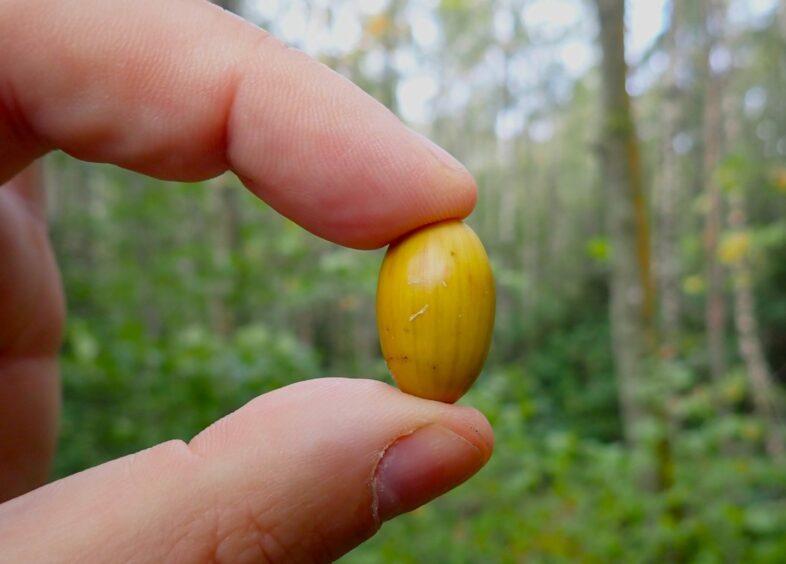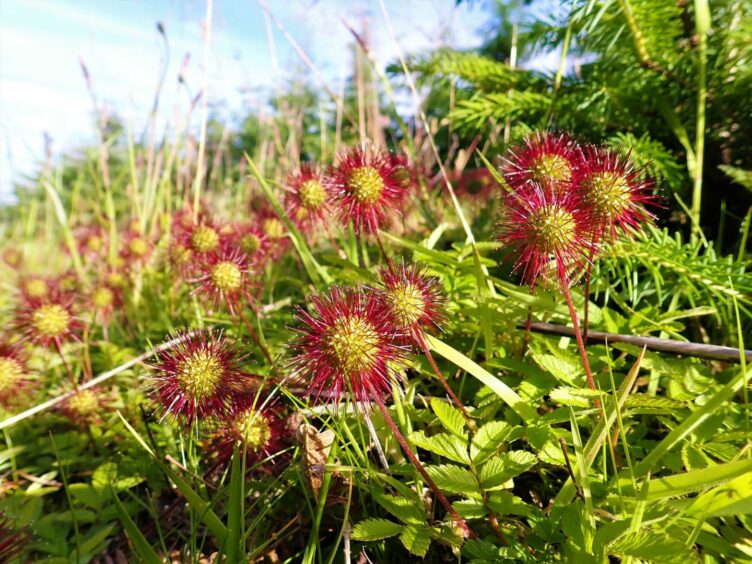It was a gusty autumn day by a woodland edge and sycamore seeds twirled around me like mini helicopters.
I watched one seed propeller earthwards and then suddenly gain height as it caught the uplift from a blast of wind, which carried it for a short distance further before eventually cascading to the ground.
A marvel of design
The sycamore’s propeller-like seeds are a marvel of design and a reminder of nature’s endless capacity to throw up the most incredible innovations to gain that extra bit of advantage.
For the sycamore, its twirling seeds provide a means of dispersal away from the main body of the tree.
By this ingenious mechanism, the sycamore can spread the woodland’s reach and improve the chances of seed germination.
A seed that falls straight down has little chance of growing to maturity because even if it sprouted forth, it would quickly be shaded out by the parent tree.
Other trees have equally impressive dispersal techniques. An acorn lying on the forest floor is a magnet to a foraging squirrel or jay.
Hidden for later
Both creatures are great hoarders and will often carry acorns away to be buried for later retrieval during the dark and cold days of winter when food is scarce.
But the jays and squirrels can’t remember where every nut is hidden, and many acorns will burst from the ground as saplings the following spring.
Not only have the acorns been carried a considerable distance, but they have reaped the additional benefit of being carefully buried and patted into the ground with the surety of a diligent gardener.
Travel far and wide
Sycamores and oaks, however, don’t come close to the seed dispersal abilities of many other plants, most notably dandelions and rosebay willowherb.
Their white, fluffy parachute like seeds can travel considerable distances in the wind and even cross seas.
Earlier this year, a strange-looking plant growing on hill margins in southern Perthshire caught my eye, which exhibited spherical seedheads covered in reddish spines.
Invader from New Zealand
After some head scratching, research revealed the plant’s identity as piri-piri burr, an invasive non-native species from New Zealand.
It was first recorded in Britain in 1901 and was most-likely introduced here on the fleeces of imported sheep.
Piri-piri is a small shrubby plant, which produces balls of reddish flowers in late spring which ripen into red, barbed fruits, called burrs which turn brown during the summer.
From mid to late summer, the barbed burrs from the plant attach onto anything that passes – boot laces, socks, dogs and livestock, and thus the seeds are easily spread.
The plant is deemed a pest in many parts of the country because it forms dense mats which results in the loss of native plants where it grows.
Whilst piri-piri burr is an unwelcome invasive species, one can’t help but admire its impressive seed dispersal abilities.
What evolutionary processes spurred such an innovative ‘Velcro’ design?
I’ll never know the answer to that, and despite huge advances in our scientific knowledge, there is much in nature that defies logical explanation.




Conversation